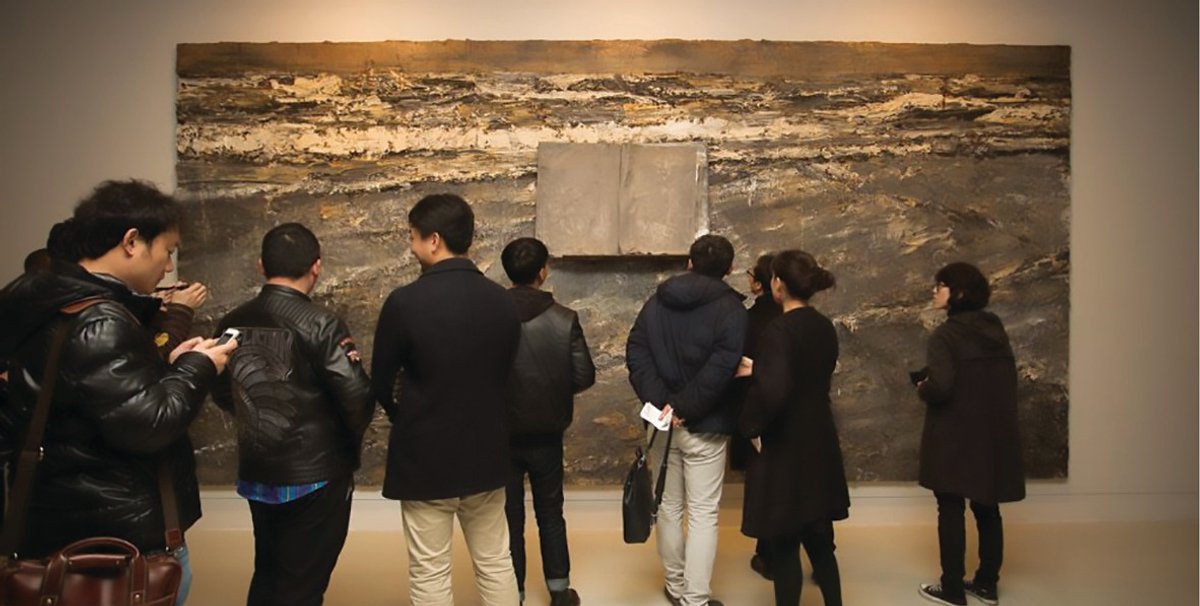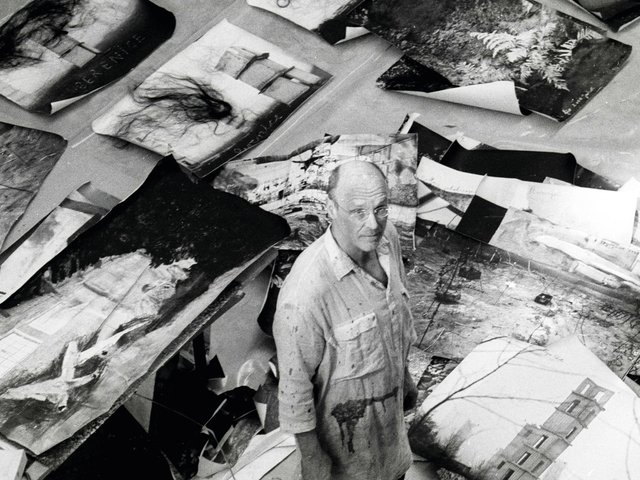The organisers of the controversial Anselm Kiefer exhibition at the Central Academy of Fine Arts Museum (CAFAM) in Beijing are fighting back against the Western dealers who represent the artist and who opposed the project.
Anselm Kiefer: Coagulation, was held at CAFAM between 19 November 2016 and 8 January 2017, the first stop of a planned four-city tour. However, the artist protested that it was organised against his wishes and without his consent, and refused to attend. His three representing galleries, White Cube, Gagosian and Thaddaeus Ropac, issued a joint statement confirming this, adding that “to plan such an important showcase in China without the artist’s input is disrespectful”.
The show’s chief curator and newly-named president of the German national committee of Icom (International Council of Museums), Beate Reifenscheid, calls this an attack on her curatorial freedom: “Curators must respect the artist but also be able to work for the wider public’s benefit. If all artists and their art dealers could control when, where and why their art is displayed in museums after it’s sold, the public interest would not be fully served.”
She has the support of several colleagues, including the freelance curator and writer Klaus Honnef, who told The Art Newspaper: “I am convinced that the so-called global players in art dealing threaten not only curatorial freedom… they work hand-in-hand with private and allied collectors. Nearly all important artists, meaning those with high commercial potential such as Kiefer, are represented by these powerful art dealers... who are protecting their financial interests. This is the real background to the problems with the CAFAM exhibition.”
The show was jointly organised by CAFAM and Bell Art, a Hamburg-based platform for cultural exchange between China and Europe. It consisted of 87 works, 80 of which belong to the Chinese-born, Germany-based collector, Maria Chen Tu. Five of the remaining seven works belong to private collectors who loaned them to the Ludwig Museum in Koblenz, where Reifenscheid is director (though for the purposes of the Kiefer show, she was working as an unpaid curator for Bell Art).
Bell Art and Reifenscheid’s public relations consultant, Montieth Illingworth, says this was “a classic case of how commercial interests in the art world can overreach and of how the profit motive seeks to control and restrain curatorial freedom”. He adds that, despite the Ludwig Museum being named on publicity material, it was in no way involved in the exhibition.
“It was extraordinary for Kiefer and his dealers to speak out like that against a curator, a small cultural organisation [Bell] and China’s most important and high-profile public museum [CAFAM]. They’re concerned that this exhibition will interfere with their own commercial strategy for his works in the highly lucrative Chinese market,” says Illingworth. He did not wish to comment on the possibility of future legal action.
Thaddaeus Ropac defends the galleries’ position: “We categorically reject the idea that we were against the exhibition at CAFAM in Beijing because of commercial interests. Why would the exhibition have a negative commercial impact on [Kiefer’s] galleries? Our role is to support our artists in all their ideas and projects, whether they are commercial or not.” Ropac also says that when his gallery first got wind of “the concrete plans to do a Kiefer exhibition at CAFAM, we tried several times to get in contact with the curator, who blocked any attempt to speak”. Reifenscheid, however, says she attempted to contact Kiefer but was rebuffed.
As for the three planned stops for the show, which were to include Nanjing and Guangzhou, it is not clear whether they will now go ahead.
Chinese tycoon who has invested millions in art was a major sponsor of kiefer’s show Another sponsor of the Kiefer exhibition is the Baijia Cultural Investment Group, which belongs to the property magnate Yan Lugen, one of Artnews’s top Asian collectors. He has invested millions in art, founding and sponsoring the Nanjing International Art Festival. He is expected to invest millions of dollars in a new Nanjing Biennale, scheduled for October 2018. Yan also has his own museum, the Baijia Lake Museum, in Nanjing; “I have already bought and collected more than 3,000 works of Picasso, Monet, Van Gogh, Rodin, Matisse, Delvaux, Dalí, Renoir, Chagall, Derain, Henri Martin, Degas and Utrillo,” he tells The Art Newspaper.
He has established a series of ART100 galleries in spaces in New York, Hong Kong, Singapore, Beijing and Nanjing and will open further outlets in London and Paris this year. None of the works in the Kiefer show were for sale, he says; it is a “not-for-profit exhibition and I do not own them”.




